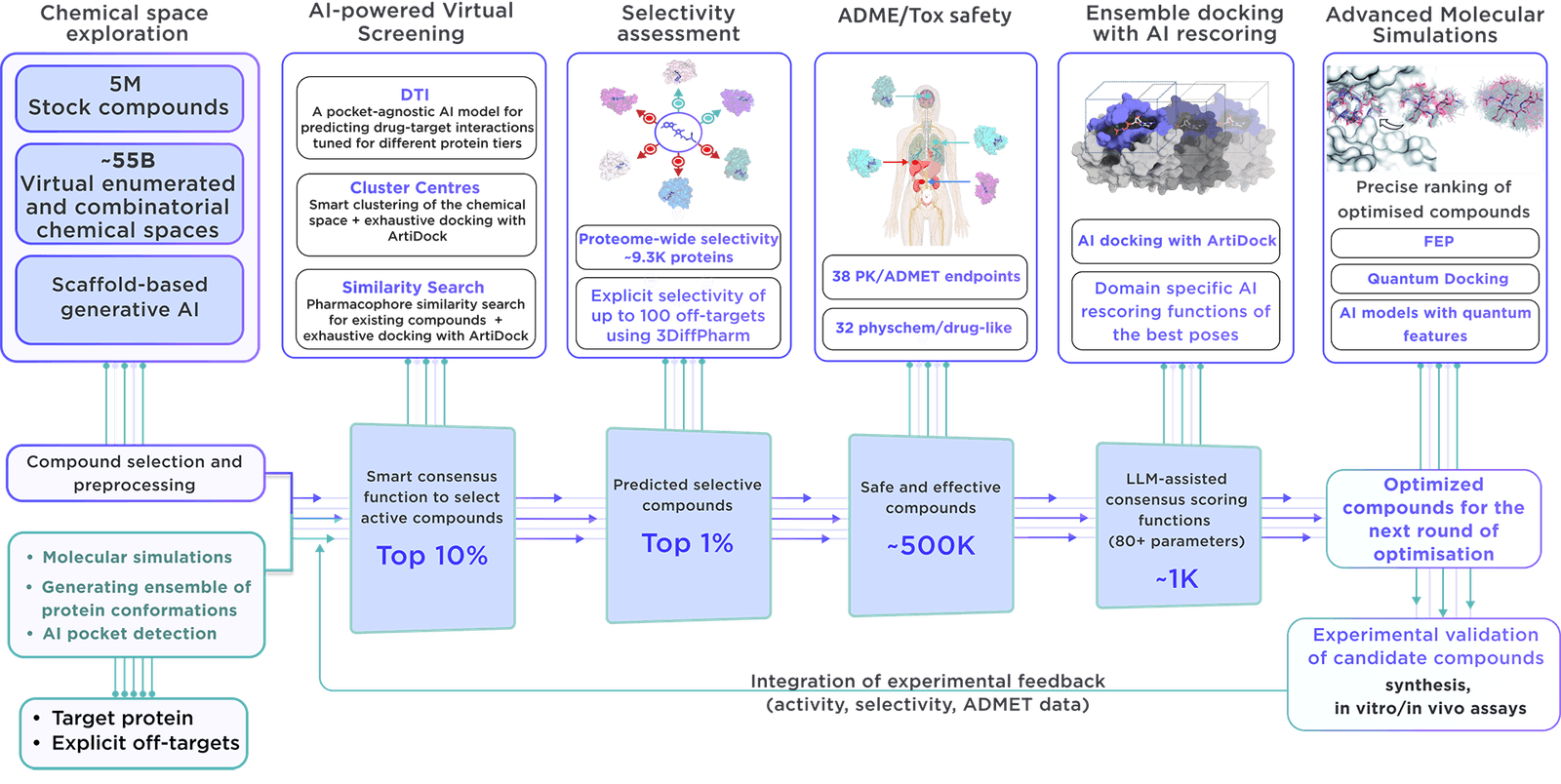Focused On-demand Libraries - Receptor.AI Collaboration
Explore the Potential with AI-Driven Innovation
Our detailed focused library is generated on demand with advanced virtual screening and parameter assessment technology powered by the Receptor.AI drug discovery platform. This method surpasses traditional approaches, delivering compounds of better quality with enhanced activity, selectivity, and safety.
From a virtual chemical space containing more than 60 billion molecules, we precisely choose certain compounds. Reaxense aids in their synthesis and provision.
Contained in the library are leading modulators, each labelled with 38 ADME-Tox and 32 physicochemical and drug-likeness qualities. In addition, each compound is illustrated with its optimal docking poses, affinity scores, and activity scores, giving a complete picture.
Our top-notch dedicated system is used to design specialised libraries.
By deploying molecular simulations, our approach comprehensively covers a broad array of proteins, tracking their flexibility and dynamics individually and within complexes. Ensemble virtual screening is utilised to take into account conformational dynamics, identifying pivotal binding sites located within functional regions and at allosteric locations. This thorough exploration ensures that every conceivable mechanism of action is considered, aiming to identify new therapeutic targets and advance lead compounds throughout a vast spectrum of biological functions.
Our library stands out due to several important features:
- The Receptor.AI platform compiles comprehensive data on the target protein, encompassing previous experiments, literature, known ligands, structural details, and more, leading to a higher chance of selecting the most relevant compounds.
- Advanced molecular simulations on the platform help pinpoint potential binding sites, making the compounds in our focused library ideal for finding allosteric inhibitors and targeting cryptic pockets.
- Receptor.AI boasts over 50 tailor-made AI models, rigorously tested and proven in various drug discovery projects and research initiatives. They are crafted for efficacy, dependability, and precision, all of which are key in creating our focused libraries.
- Beyond creating focused libraries, Receptor.AI offers comprehensive services and complete solutions throughout the preclinical drug discovery phase. Our success-based pricing model minimises risk and maximises the mutual benefits of the project's success.
Receptor.AI
Q9H204
UPID:
MED28_HUMAN
ALTERNATIVE NAMES:
Endothelial-derived protein 1; Mediator complex subunit 28; Merlin and Grb2-interacting cytoskeletal protein; Tumor angiogenesis marker EG-1
ALTERNATIVE UPACC:
Q9H204; Q9BZJ5

